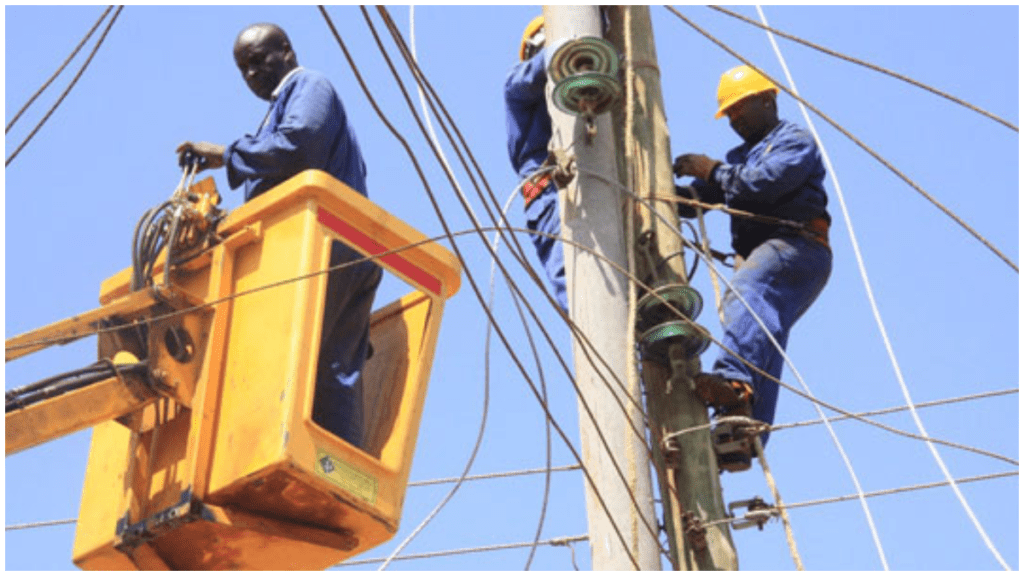Kenyan households have received significant relief following a 23.4 percent drop in electricity prices in January 2025 compared to the same period last year. The decline is attributed to a stronger local currency and lower fuel costs.
According to the latest data from the Kenya National Bureau of Statistics (KNBS), consumers paid an average of Sh5,705.92 for 200 kilowatt-hours (kWh) of electricity in January 2025, marking a sharp reduction from Sh7,447 recorded in January 2024.
This shift reverses the previous trend of rising electricity costs, which had raised concerns about Kenya’s competitiveness in attracting foreign investors. For instance, between January 2023 and January 2024, power prices surged by 41.08 percent, raising alarm over the affordability of electricity in the country.
Key Factors Behind the Decline
One of the main reasons for the price drop is the appreciation of the Kenyan shilling, which has strengthened against the US dollar. In January 2024, the currency traded at a record low of Sh163 per dollar, but it has since rebounded to an average of Sh129 in January 2025.
Given that Kenya Power’s Power Purchase Agreements (PPAs) are primarily denominated in foreign currencies like the US dollar and euro, a stronger shilling has significantly lowered electricity costs.
Additionally, increased hydropower generation has played a role in reducing electricity prices. The heavy rains experienced in the first half of last year boosted hydropower production, leading to a decline in fuel costs within power bills.
Hydropower remains the cheapest source of electricity in Kenya, with an average tariff of $0.0533 per unit, followed closely by wind energy at $0.0594 per unit.
Impact on Inflation and Supply Reliability
The reduction in electricity costs has contributed to a notable drop in inflation, alongside falling food prices. KNBS reports that inflation stood at 3.3 percent in January 2025, a sharp decline from 6.9 percent recorded in January 2024.
However, despite the relief in pricing, power supply reliability remains a key concern. In recent months, nationwide blackouts have raised questions about Kenya’s electricity infrastructure, even as costs become more affordable.
Additionally, over 60 percent of rural households are still not connected to the national grid, despite ongoing government efforts to expand access.
A KNBS survey indicates that Turkana, West Pokot, and Homa Bay are the least electrified counties, whereas Nairobi and Kiambu have significantly higher connection rates. The report reveals that 91 percent of households in Turkana are not connected to the electricity grid, followed by 85.2 percent in West Pokot and 79.9 percent in Homa Bay. In contrast, Nairobi has the highest electricity connection rate at 95.2 percent, closely followed by Kiambu at 95.1 percent. Other counties with high electricity access include Murang’a (87.3 percent), Nyeri (87.1 percent), and Mombasa (82.9 percent).

Government Commitment to Expanding Access
Last month, President William Ruto launched the Sh1 billion Last Mile electricity connection project in Busia County, aiming to expand power access to underserved communities. The initiative targets 20,000 households by optimizing 148 transformers, significantly improving power distribution in the region.
Speaking during the launch, the President reaffirmed his commitment to providing affordable and reliable electricity, emphasizing its role in improving livelihoods and driving economic growth.
“This project is not just about lighting homes; it’s about unlocking opportunities, supporting businesses, and transforming lives for over 20,000 households in Busia County,” Ruto stated.
He further underscored the economic and social benefits of increased electricity access, highlighting its impact on education, healthcare, and entrepreneurship.
“Electricity is a gateway to better healthcare, quality education, and thriving businesses. With initiatives like this, we are ensuring that no Kenyan is left behind in our journey toward development,” he added.
The Kenya Kwanza government, under the United Democratic Alliance (UDA) manifesto, had committed to reducing electricity costs through a three-point strategy outlined in its plan titled “The Plan.”
One of the key strategies was revamping the transmission and distribution network by mobilizing resources to improve the efficiency and reliability of electricity infrastructure. The government also aimed to accelerate geothermal resource development, which would provide a more stable and cost-effective energy supply.
Additionally, Kenya Kwanza pledged to establish Liquified Natural Gas (LNG) storage facilities in Mombasa, a move intended to phase out heavy fuel oil (HFO) from the country’s power generation portfolio.







